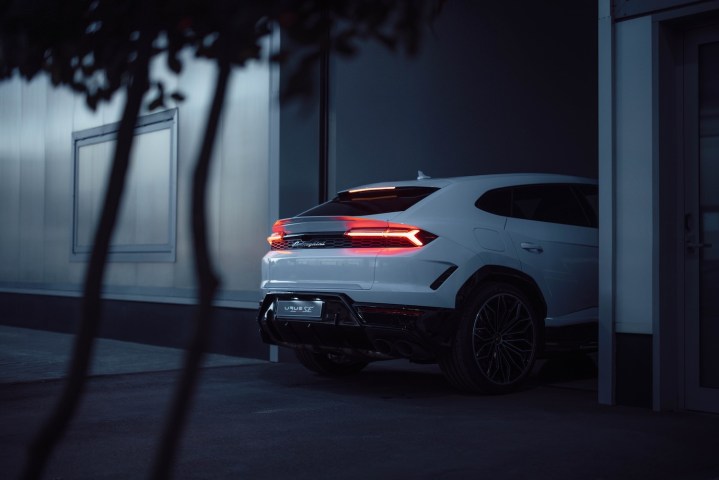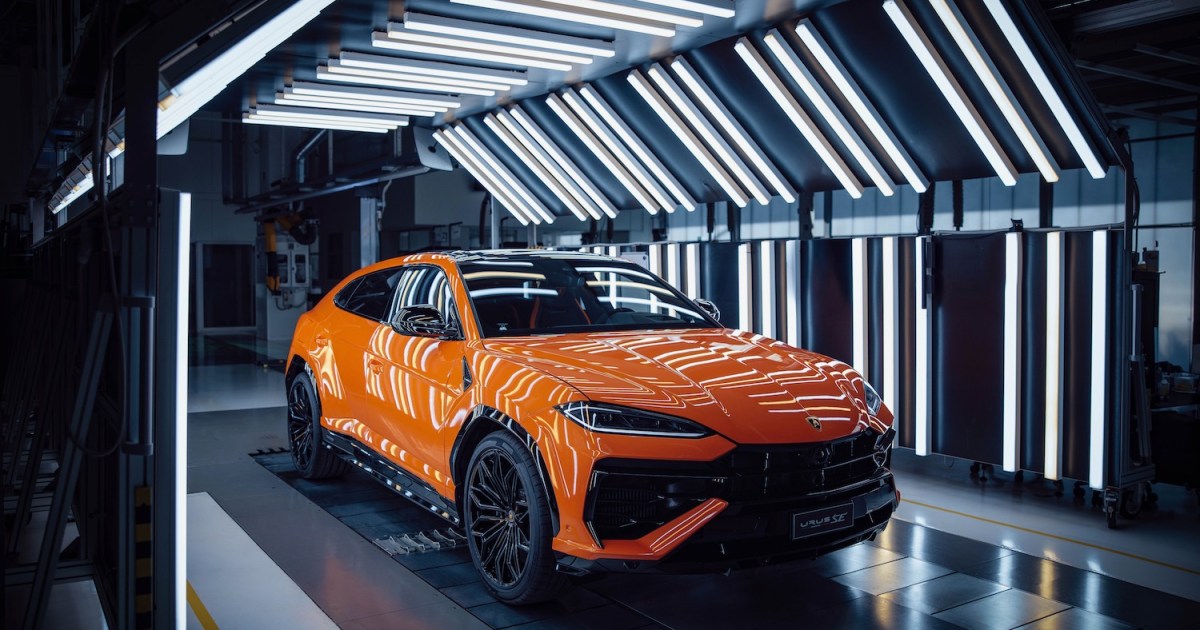Lamborghini built its reputation with outrageous supercars like the Miura, Countach, and Diablo, but today its bestseller is the Urus SUV. And a new plug-in hybrid version of that car could make or break the automaker’s push to hybridize its entire lineup by the end of 2024.
Debuting at the 2024 Beijing Auto Show, the Lamborghini Urus SE is the automaker’s second plug-in hybrid, following the Revuelto supercar unveiled in 2023, and precedes a plug-in hybrid replacement for the Huracán, which will be unveiled later this year.
Like its supercar siblings, the Urus SE isn’t a first-of-its kind vehicle but, as Lamborghini Chief Technical Officer Rouven Mohr explained in an interview with Digital Trends ahead of the Urus SE’s reveal, it aims to stand out with a distinctly Lamborghini approach to plug-in hybrid tech and better performance than non-hybrid Urus models.
More than just impressive numbers

The Urus SE has the same twin-turbocharged 4.0-liter V8 under its hood as other Urus models, but with an electric motor stuffed into its eight-speed automatic transmission and fed by a 25-kilowatt-hour battery pack. All-wheel drive is still standard, but the Urus SE replaces the Torsen center differential used in other Urus models with an electronically actuated central clutch to split power between the front and rear axles. There’s also an electronic limited-slip rear differential for the back axle.
Gasoline and electricity combine for 789 horsepower and 700 pound-feet of torque, making this plug-in hybrid the most powerful Urus to date. It’s also the fastest Urus variant, with a top speed of 193 mph, and its zero to 62 mph time of 3.4 seconds is just 0.1 second slower than the current non-hybrid Urus Performante. But these impressive numbers aren’t the point.
“The performance figures … are only the baseline,” Mohr said, noting that engineers could have made the Urus SE even more powerful if they wanted to. “We are not defining ourselves only based on the fastest lap of a certain track. We are always defining ourselves on providing the most emotional drive to the customer.”
Corporate parts, Lamborghini character

The Urus was unveiled in 2017, but the decision to make a plug-in hybrid version came much later, as part of the automaker’s Direzione Cor Tauri business strategy, which was announced in 2021. Making a plug-in variant of a vehicle not originally intended to have that powertrain was made easier because Lamborghini could lean on the resources of its parent Volkswagen Group, Mohr noted. The Urus does, after all, share its MLB Evo platform with the Bentley Bentayga and Porsche Cayenne — both of which are already available as plug-in hybrids. The challenge was differentiation.
“We had to make sure that the outcome is not comparable to other cars,” Mohr said. “Everything has to feel like a typical Lambo.”
A new all-wheel drive system aims for a more natural feel than rivals’ systems.
Like many modern cars, the Urus SE’s character is as much a product of fine-tuning things like shift strategies, torque application, and steering behavior as it is hardware choices. Mohr specifically pointed to the plug-in hybrid’s new all-wheel drive system, which is controlled by software developed in-house by Lamborghini and aimed at creating a more natural feel than rivals’ systems.
“There are a lot of cars on the market, when you drive them really at the limit, you feel that there is a kind of inconsistency, like two cars in one. This behavior, for us, is not acceptable,” Mohr said.
When cornering in the Sport drive mode, for example, the Urus SE won’t abruptly cut in the front axle when it detects that the rear wheels are slipping, which adds grip, but in a disconcerting way, Mohr said. The software is even smart enough to anticipate when a driver wants to drift, and even uses the front axle to help hold the car sideways, he added.
Performance first

The Urus SE is a true plug-in hybrid. Lamborghini expects up to 37 miles of all-electric range (as measured on the more lenient European testing cycle) at speeds up to 80 mph, leading to an 80% emissions reduction compared to non-hybrid Urus models. But this is no Toyota Prius Prime.
Reliance on gasoline power means performance should be fairly consistent on a track.
“Combustion power is leading,” Mohr said, “and electric is supporting.” The Urus SE might be able to trundle through suburbia on electric power, but if you’re driving it like a Lamborghini, the motor is primarily used to boost power and fill in gaps in the gasoline V8’s torque curve for consistently brutal acceleration. The outsize role of gasoline power means performance should be fairly consistent on a track as well. Mohr is confident that if drivers need to dial things back, it won’t be because of the electric motor or battery.
“First you have a problem with the tires, then with the drivetrain,” he said.
Helping with that are new underbody air vents and redesigned air ducts that increase cooling airflow to mechanical components by 15% over other Urus models, according to Lamborghini. They’re part of an exterior refresh that includes an updated front end incorporating styling cues from the Revuelto, a rear end that takes inspiration from the 2000s Lamborghini Gallardo, and a new rear spoiler and rear diffuser claimed to increase downforce by 35% at high speeds, providing greater stability at those speeds. The interior also gets a pair of 12.3-inch displays — one serving as the instrument cluster, the other as the infotainment touchscreen.
EVs next
It is possible to shift the balance of power toward electricity by downsizing the combustion engine and relying more on the electric motor or motors. But this is the “wrong direction” for Lamborghini, Mohr feels.
“From my point of view, you run into a situation that you have compromises in the performance consistency,” he said, adding that such a setup might also compromise the “emotional side,” depending on what kind of combustion engine is used. A Lamborghini is also unlikely to be its owner’s only car, so customers aren’t really concerned with practical matters like extra-long electric range or fuel savings, Mohr noted.
Lamborghini is still working on making EVs feel suitably emotional.
“I would prefer to go the next step to full electric, but with a proper interpretation of what means ‘emotional electric driving,” he said. Lamborghini is still working on making EVs feel suitably emotional, Mohr admits, but it also doesn’t plan to launch its first EVs until near the end of the decade.
The first of those models, based on the Lanzador concept unveiled in 2023, is scheduled to arrive in 2028. It will followed by a “super SUV” in 2029. In the meantime, the Urus SE and its siblings will bridge the gap between pure internal combustion and pure electrification — in their uniquely Lamborghini way.
Editors’ Recommendations







